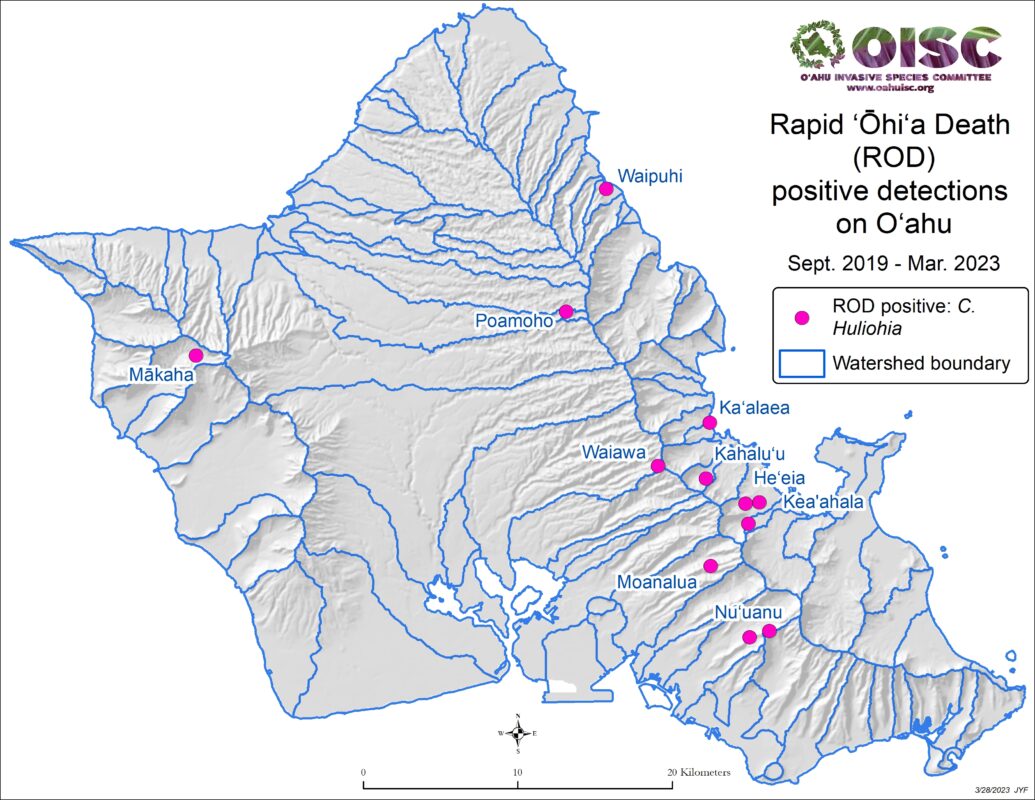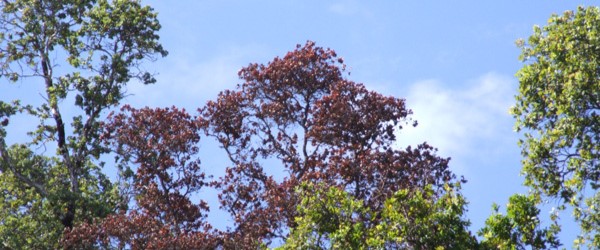Keep up-to-date about ROD on Oahu and learn what you can do to stop ROD from spreading.
#RODOahu
FOURTH DETECTION OF RAPID ʻŌHIʻA DEATH ON O‘AHU
Less Aggressive Fungus Found in State Forest Reserve
Rapid ʻŌhiʻa Death Detected on Oʻahu
ROD has now been detected on Hawai‘ Island, Maui, Kaua‘i and O‘ahu. However, to date, the more aggressive form of the disease has NOT been found on Maui or O‘ahu, and is limited on Kaua‘i.



